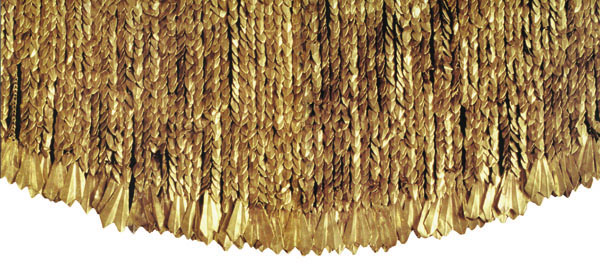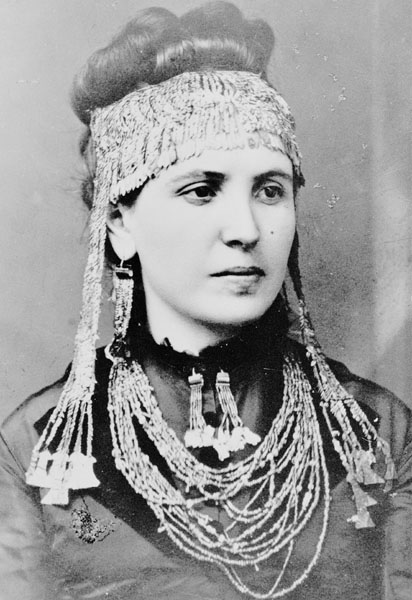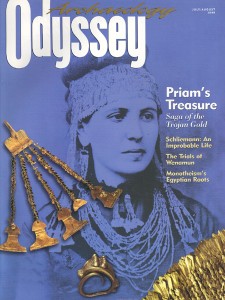Priam’s Treasure
The story behind the 4,000-year-old hoard of Trojan gold


Heinrich Schliemann’s second season of excavation in 1872 on the mound of Hisarlik, which he fervently believed to be the site of Homer’s Troy,1 had ended in triumph. He had discovered, so he thought, the “Great Tower of Ilium”—which Hector’s wife Andromache anxiously climbed upon learning that the Trojans were being pushed back by the advancing Greek armies (Iliad, Book VI).
Shortly afterward, however, in February 1873, Frank Calvert, a British expatriate who had initially interested Schliemann in excavating Hisarlik, published an article in the Levant Herald in which he debunked Schliemann’s “Great Tower.”2 Calvert, who had spent most of his life in the Troad, the area around Troy on Turkey’s northeast coast, and who knew more than anyone about its archaeology, correctly observed that the “Great Tower” was not a tower at all but simply the place where two different phases of a city wall parted and reconverged.
Already a library member? Log in here.
Institution user? Log in with your IP address.

